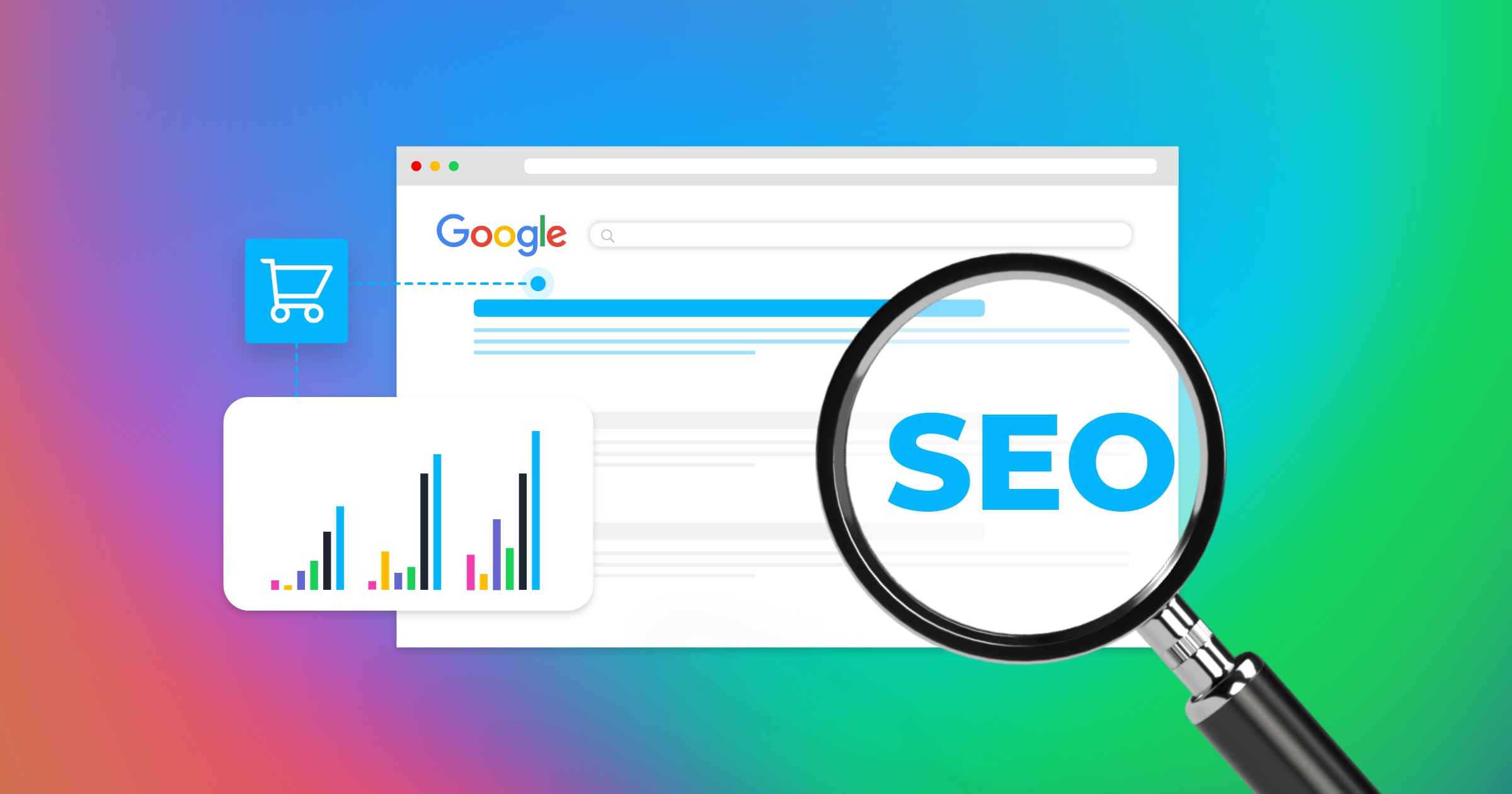Hello!
 When you run an eCommerce store, your ultimate goal is conversions. You want customers to buy products from you, and then you want to keep your customers engaged and loyal. Keeping customers loyal requires transparency in the fulfillment and shipping process, resolving issues with deliveries proactively, and offering things like special offers.
When you run an eCommerce store, your ultimate goal is conversions. You want customers to buy products from you, and then you want to keep your customers engaged and loyal. Keeping customers loyal requires transparency in the fulfillment and shipping process, resolving issues with deliveries proactively, and offering things like special offers.
Before you can engage customers, though, you need them to be able to find your business.
That means that you need to consider search engine optimization or SEO. The other way to drive traffic to your eCommerce business is through paid advertising, but it’s good to combine this with organic traffic. Organic traffic is technically free, and your efforts can build on one another over time.
 If you’re relying only on paid advertising, it can end up costing you thousands of dollars to gain relatively few customers. When you invest your time and energy in SEO, you can organically show up in search results, which is critical considering most shoppers go to Google when they want to make a purchase.
If you’re relying only on paid advertising, it can end up costing you thousands of dollars to gain relatively few customers. When you invest your time and energy in SEO, you can organically show up in search results, which is critical considering most shoppers go to Google when they want to make a purchase.
The following are some of the key things to know about SEO for eCommerce in 2023.
Researching Keywords
In order to reach your customers, you’ll begin your eCommerce SEO journey with keyword research. You’ll want to create intent-based keyword lists that are targeted.
Short-tail keywords are those one and two-word phrases that tend to drive a lot of traffic but not conversions.
 Long-tail keywords are usually up to 40 characters, they get more specific, and they tend to drive more conversions.
Long-tail keywords are usually up to 40 characters, they get more specific, and they tend to drive more conversions.
For example, rather than just “mattresses,” which is a short-tail keyword, a long-tail keyword might be “best organic mattresses for couples.”
There are a lot of ways you can start doing keyword research. A free and simple way is to use Google Autosuggest.
You type in your keyword search term, and then Google will autosuggest options for you. You can also use Google Related Search Suggestions.
There are also a variety of free and paid keyword tools.
 When you’re doing keyword research, intent can be put into two broad categories. There’s informational keyword intent, which is used to describe the information a searcher is looking for.
When you’re doing keyword research, intent can be put into two broad categories. There’s informational keyword intent, which is used to describe the information a searcher is looking for.
These types of searches include how-twos, direct purchases, and factual searches.
Then, there’s commercial keyword intent, for when people are looking for information that’s going to help them as they make an actual purchase. Commercial keyword intent is the best place to focus if you’re an eCommerce retailer because people want to find what they need as quickly as they can.
Site Architecture
If you’re just starting an eCommerce business, you can begin your site architecture from scratch with an eye toward SEO. If you are an existing business, you might want to revamp your website.
 Site architecture refers to how you organize your site. Your site architecture lets you create a map of how a user is likely to move through your website. You want users to be able to find key pages and then easily see the relationships between those pages.
Site architecture refers to how you organize your site. Your site architecture lets you create a map of how a user is likely to move through your website. You want users to be able to find key pages and then easily see the relationships between those pages.
It should take very few clicks for someone to navigate from a product page back to your homepage.
Your site architecture takes into consideration your menus and whether you’re going to use drop-down menus. If you’re using drop-down menus, your navigation needs to be written in HTML because otherwise, search engines aren’t going to be able to figure out your navigation.
Technical SEO
 Technical SEO is especially important for an eCommerce business. You need to have a site that has clean URLs and the right type of internal linking, and there shouldn’t be stacked redirects.
Technical SEO is especially important for an eCommerce business. You need to have a site that has clean URLs and the right type of internal linking, and there shouldn’t be stacked redirects.
To improve your technical SEO, there are some relatively easy steps you can take that should make a pretty significant difference.
For example, consider changing the internal links on your homepage and adding canonical tags.
An eCommerce site should have two types of schema markup. There’s product schema markup which is the product name and price. You can also add other features like description, brand name, and URL.
There’s also review schema markup, which requires aggregate ratings, and then individual review.
 Something else to remember with technical SEO is to redirect your 404 pages. You want to clean up and redirect dead pages because Google’s ultimate goal is to give searchers the best possible experience. If you have a product that’s not available anymore and you delete a page, then people might get a 404 page.
Something else to remember with technical SEO is to redirect your 404 pages. You want to clean up and redirect dead pages because Google’s ultimate goal is to give searchers the best possible experience. If you have a product that’s not available anymore and you delete a page, then people might get a 404 page.
You can use a 301 redirect to deal with this technical SEO issue.
Pagination falls into the larger category of technical SEO for eCommerce businesses. With pagination, you can divide your content into smaller sections so that users aren’t scrolling endlessly.
Also read:
- All You Need to Know About Smart Pepper Sprays
- How To Hire And Manage A Remote Team
- How to Effectively Optimize Your Production Line?
Optimizing Product Pages
As an eCommerce business, your on-page SEO will revolve primarily around your product descriptions and product pages.
 Some of the things to remember to optimize your product pages include:
Some of the things to remember to optimize your product pages include:
- You should optimize your images. Images are an often-neglected area of SEO. You don’t want to go overboard with images because they can be distracting, but you do want to think about using them in a smart way that’s going to give you higher rankings. For example, provide captions that have alt-tags for your images, and use keywords in file names.
- Reviews will deliver snippets of information to shoppers that help them decide which store or product to go with. Reviews aren’t just important to help buyers make a decision—they’re also important for SEO. Encourage your customers to leave reviews after they buy from you with automated messages.
- Ensure your site is user-friendly. Your user experience (UX) means that your site looks good and works well. You want people to stay engaged as they browse. UX also affects SEO. If Google thinks your eCommerce site gives a bad experience in terms of UX, you might end up ranking lower.
 Finally, avoid duplicate pages and content. For example, don’t reuse product descriptions that you pull from elsewhere. You need to make sure that you’re providing as much fresh content as possible. Reducing your duplication in descriptions is going to go a long way to help you rank higher on Google.
Finally, avoid duplicate pages and content. For example, don’t reuse product descriptions that you pull from elsewhere. You need to make sure that you’re providing as much fresh content as possible. Reducing your duplication in descriptions is going to go a long way to help you rank higher on Google.
Thank you!
Join us on social media!
See you!






